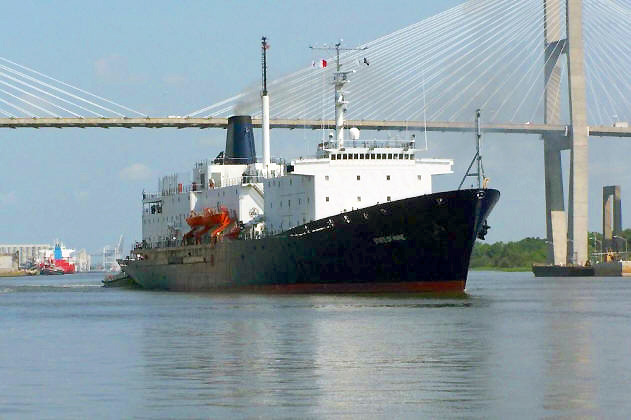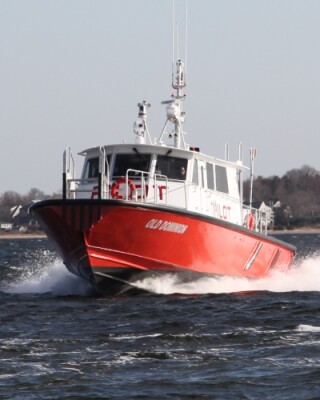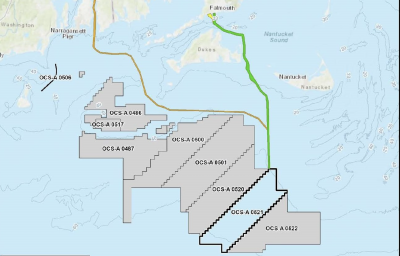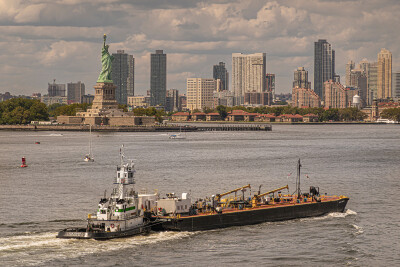Congress and the Maritime Administration have made progress in replacing the aging fleet of vessels that train cadets at the nation’s six state maritime academies.
Over the past two years, lawmakers have approved spending $600 million to replace vessels at the State University of New York Maritime College and Massachusetts Maritime Academy. The Maritime Administration, which oversees the schools, is currently reviewing proposals for a Vessel Construction Manager to be in charge of the final design, selection of a shipyard, construction and delivery of the ships to the academies. That selection is expected in the next few months.
Based on need and age of the vessel, Maine Maritime is next in line, followed by Texas A&M and California Maritime Academy. The average age of school training ships is 37 years, and Marad says the ships are nearing the end of their service lives.
Once completed, SUNY’s new vessel will be the first new-build training ship in nearly 150 years of merchant marine officer training, as the academy ships are traditionally repurposed from vessels retired from the military.

A rendering of the national security multi-mission vessel to replace aging maritime training ships. SUNY Maritime image.
The idea is to build identical National Security Multi-Mission Vessel (NSMMV) training vessels for each school as a way to achieve cost savings, standardization of training and assure that vessels called up during national emergencies can provide a range of important services.
According to Marad, this new class of vessel is designed for the joint purpose of providing state-of-the-art, at-sea training for up to 600 mariners, as well as humanitarian aid during national emergencies. The NSMMV would be able to respond to hurricanes, as the vessel’s classrooms and laboratories can be converted to hospital facilities, and it would be able to assist damaged ports with a roll-on/roll-off ramp to easily and quickly load and discharge cargo.
But President Trump has thrown a curve ball at the program. In his FY 2020 budget released in March, the president proposed a much lower budget for the Maine Maritime ship - $205 million, compared to the $300 million awarded for ships at the other two academies.
This rankled Sen. Susan Collins, a Maine Republican and chair of the Transportation Appropriations subcommittee, who questioned the plan during a recent Senate budget hearing. She said that the Office of Management and the Budget, which draws up the president’s budget, had applied an erroneous calculation in determining a budget that would build a smaller and what she calls an inferior training ship for Maine.
The academy’s present training ship, the State of Maine, was built as a fast oceanographic research vessel for the Navy by Bethlehem Steel Corp. at its Sparrows Point Yard in Maryland and launched in 1990. She was laid up after an engine casualty in 1993, later converted and delivered to Maine Maritime in 1997 with accommodations for up to 302 cadets and crew.
“I am deeply disappointed in this proposal, which departs from the years of planning and design work that Marad completed on the National Security Multi-Mission Vessel,” said Collins. “This budget would require Marad to start from scratch in designing a brand new ship, and would be detrimental to the training needs at Maine Maritime.”
She said the administration cited the lower number of students enrolled at Maine Maritime who are working to earn their Coast Guard licenses compared to the other academies.
“But it fails to recognize that Maine has the same number of Coast Guard licensed graduates as Massachusetts and California, and has the same training needs because they need training at sea. It is the same in Massachusetts as in Maine. So OMB is operating under a completely wrong assumption with only $205 million,” the senator said.
Elaine Chao, Secretary of Transportation, told Collins that “your arguments and the points that you made are very good ones, and I look forward to working with you on it.”
At-sea experience is a crucial aspect of academy cadet training, as a Coast Guard license requires at least 360 days of at-sea time. The training ships, which are owned by the federal government, are the primary and often the only means for cadets to learn, train and earn this required at-sea time, Rear Adm. Michael Alfultis, president of SUNY Maritime, told a recent congressional hearing. He said the technology on the older vessels is vastly out of date and “not sufficient for ensuring we produce competent mariners who are technologically savvy.”
Replacement ships won’t be coming on line anytime soon, however. According to Marad, the $600 million appropriation for the first two ships is just the first step. After the Vessel Construction Manager is determined, it could take up to 40 months - that’s more than three years - to build and deliver the first vessels to SUNY and Mass Maritime.





